

The Depths of Mount Aso
|
Japan is home to over 100 active volcanoes, out of which around 50 are monitored closely by the government for safety reasons. Among these is the largest active volcano in Japan, Mount Aso, that is located almost in the centre of Kyushu. Found in Aso-Kuju National Park in Kumamoto prefecture, Mount Aso is one of the largest calderas in the world, stretching 18 kilometres from east to west, and 25 kilometres north to south. It is due to Mount Aso, that Kumamoto prefecture has earned the name of “The Land of Fire”.
Within the caldera, there lies five peaks: Kishima-dake, Eboshi-dake, Naka-dake, Taka-dake, and Neko-dake. Naka-dake is still active, and regularly emits white smoke, and occasionally ash. Naka-dake is open to visitors, except when the threat level is too high. If conditions are favourable, one can walk up all the way to the edge. However if there is bad weather, or the volcanic activity is too high which leads to poisonous gases or risk of eruption, the area may be partially or even completely closed off. On such days, an alternative would be to visit the Aso Volcano Museum, where you can learn more about Mount Aso, as well as its geography and culture. While the terrain is rough around the centre of Naka-dake, the landscape away from the crater rim transforms into green, grassy plains. Unlike most mountains in Japan, rather than trees, the area is covered with grass, such as pampas grass. The area is kept from turning into a forest through various means, such as controlled burning and mowing. The burning of dried grass also helps to remove harmful insects, in preparation for cattle grazing that starts in spring. The contrast in terrains between the volcano and grasslands adds to the charm. In particular, Kusa Senri is famous for its picturesque scenery with a combination of mountains, greenery and ponds, and cows and horses can be seen grazing on these pastoral fields. Visitors may try out horse-riding from March to December. Not to mention, the area is blessed with plenty of hot spring areas. Unfortunately, the 2016 Kumamoto earthquake has severely damaged some of Kumamoto’s sights such as Kumamoto Castle. For the region around Mount Aso, affected sights include the beautiful mountain road, Road of Laputa, as well as Aso Shrine. Aso Shrine is one of the oldest shrines in Japan, thought to have dated back to the end of Yayoi period. During the 2016 disaster, the shrine’s remarkable two-storey tower gate, which is a National Treasure, and the worship hall were damaged. While reconstruction of the tower gate is expected to be done by this December, full restoration to the shrine is estimated to be completed by 2025. It may take more than a few days to fully appreciate the vast natural beauty of Mount Aso. It stands to reason why Mount Aso remains as one of the most popular sights when visiting Kyushu. |
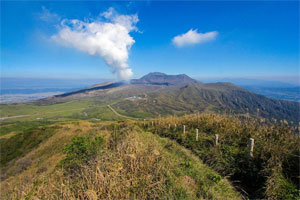 © Joe Mignano 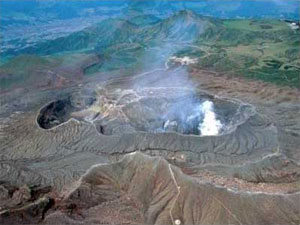 © Kumamoto Prefecture 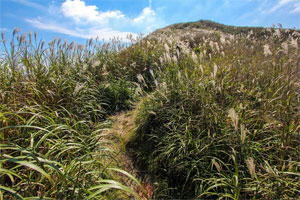 © Joe Mignano 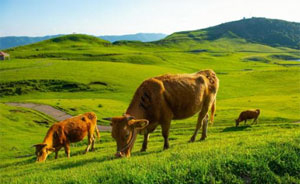 © photoAC 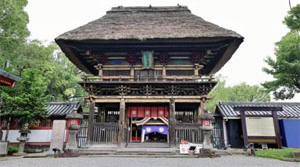 © photoAC |
Resources
|
“The Largest Caldera in the World Offers Rich Pastoral Scenery”. 2010. Web Japan. Accessed 15 November. https://web-japan.org/atlas/nature/nat14.html. Mignano, Joe. 2021. “Land of Volcanoes: Exploring Aso-Kuju National Park”. Japan Up Close. https://japanupclose.web-japan.org/spot/s20210421_4.html. “Mount Aso”. 2023. japan-guide.com. Accessed 15 November. https://www.japan-guide.com/e/e4552.html. “Aso-Kuju National Park”. 2022. Ministry of the Environment, Government of Japan. Accessed 15 November. https://www.env.go.jp/en/nature/nps/park/aso/point/index.html. “Drive into the heart of Kumamoto’s “Land of Fire””. 2023. Japan National Tourism Organization. Accessed 15 November. https://www.japan.travel/en/destinations/kyushu/kumamoto/aso-and-around/. |
|
Japan Creative Centre 4 Nassim Road, Singapore 258372 +65 6737 0434 / jcc@sn.mofa.go.jp https://www.sg.emb-japan.go.jp/JCC/ Nearest parking at Orchard Hotel & Delphi Orchard |
 |